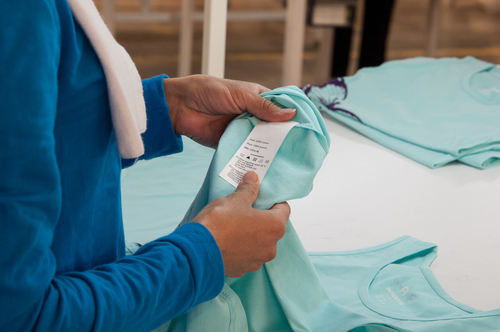Inspection is a crucial aspect of the QA process for apparel. This challenge is accentuated by the fact that many brands and retailers are thousands of miles away from their factories and production sites.
A pre-shipment inspection (PSI)—carried out after 100% of your good are produced—is the bare minimum in any inspection protocol. It ensures that you do not ship defective goods to your consumer, which could hurt your bottom line, your brand reputation, and even harm your consumers in the case of critical defects.
However, inspections need to be carried out throughout the production process to ensure that you are putting out quality products. Here are some of the inspection services provided by Third Party Inspectors (TPIs) and how they can help you as you prepare to roll out your winter products.
Raw Materials Incoming Check
Let’s say that you produce “ugly” Christmas sweaters. Prior to shipping, you discover that they stretch very easily after washing and do not return to their original size and shape. You determine that this is due to the use of certain acrylic fibers.
Imagine this happens in the middle of December. Christmas is under two weeks away and you’re out of time. At this point, you have to ship a product that is inconsistent with your brand’s representation, thus affecting customer retention. This becomes even more problematic if you’re a high-end label.
On the other hand, if you had inspected your raw materials before production even began, you could have streamlined production, reducing wastage and scrap down the line. This is not always the simplest task, which is why apparel manufacturers often enlist the services of TPIs. TPIs can help you determine the quality and quantity of raw materials needed to meet quality benchmarks.
IPI and DUPRO
TPIs also perform two other types of inspection: Production Checks (IPIs) and During Production Checks (DUPROs). IPIs are conducted when 10-20% of your inventory has been produced, whereas DUPROs are typically conducted when goods production is at 40-50%.
Even after having sourced the correct raw materials, you may run into issues farther down the production cycle. For example, you produce Santa Claus costumes and discover that the red clothing dye fades very quickly.
An IPI can help you identify what went wrong in the dyeing process so you can take corrective measures. This may entail changes to the dyeing process or even changing the dye that you use.
Your dyeing issue now appears to be resolved, but you discover that Santa’s trousers rip very easily. DUPRO can help you determine whether this is an issue with stitching or another factor in the making process. Again, you can take corrective measures and streamline production as you go. DUPRO will also help you confirm if your new dyeing process continues to meet quality benchmarks.
So, by isolating issues early in production, you can reduce wasted inventory and protect your bottom line.
Other Types of Winter Apparel
Christmas might be fast approaching, but so is winter—at least in the Northern Hemisphere. This means that goods such as thermal underwear, down-filled jackets, fleece sweaters, heat tech apparel, and even snow boots, will be in high demand.
Each one of these goods comes with their own set of inspection challenges. In the case of down-filled jackets and thermal underwear, climate change can affect the demand for your products. The last few winters in Hong Kong have been warmer than expected, which have left many companies with excess inventory.
TPIs can help you conduct audits that check the amounts and conditions of materials held. They can also provide advice on best practices that help release extra value through your warehousing system.
Fleece sweaters are still in demand well above freezing temperatures. Therefore, they aren’t as susceptible to warmer winters compared to thick, insulating inner and outerwear. However, during the trim process, you may discover that your fleece sweaters do not zip up. If you identify this issue during an IPI or DUPRO you can ensure that your reworks are less costly and that your consumers are more satisfied.
In the case of heat tech exercise clothing, fitness buffs and gym enthusiasts may be put off if your clothing lacks strong sweat-wicking properties. If you discover this issue early in the production process, you can create alternative heat tech exercising garments that pass the necessary chemical tests for sweat wicking before you resume mass production.
Needless to say, hardline goods such as snow boots will have different quality specifications compared to clothing. You may have to produce up to a dozen different sizes and half-sizes, ensuring that there is standardization and consistency in each size category. If you discover that many of your size 9’s measure up to a size 8 (or vice versa), you can ascertain the point at which the variation begins, and implement corrective measures for the rest of the production cycle.
Ensuring that your Christmas and winter apparel meets quality specifications can be a challenging and frustrating process. With its inspection services InSpec by BV is perfectly positioned to help get your winter apparel to market ahead of the upcoming Christmas spike.








